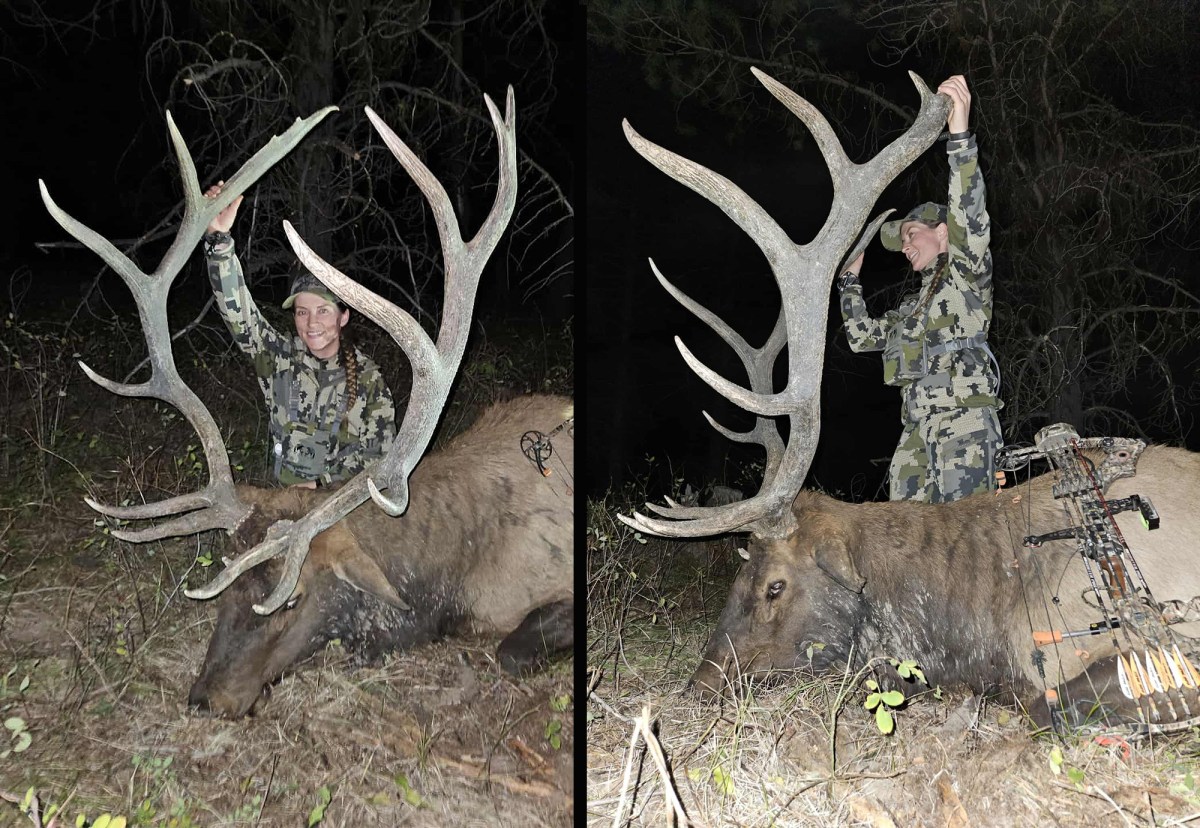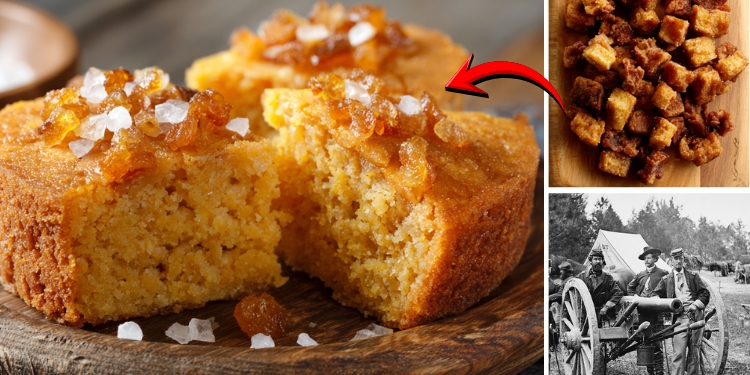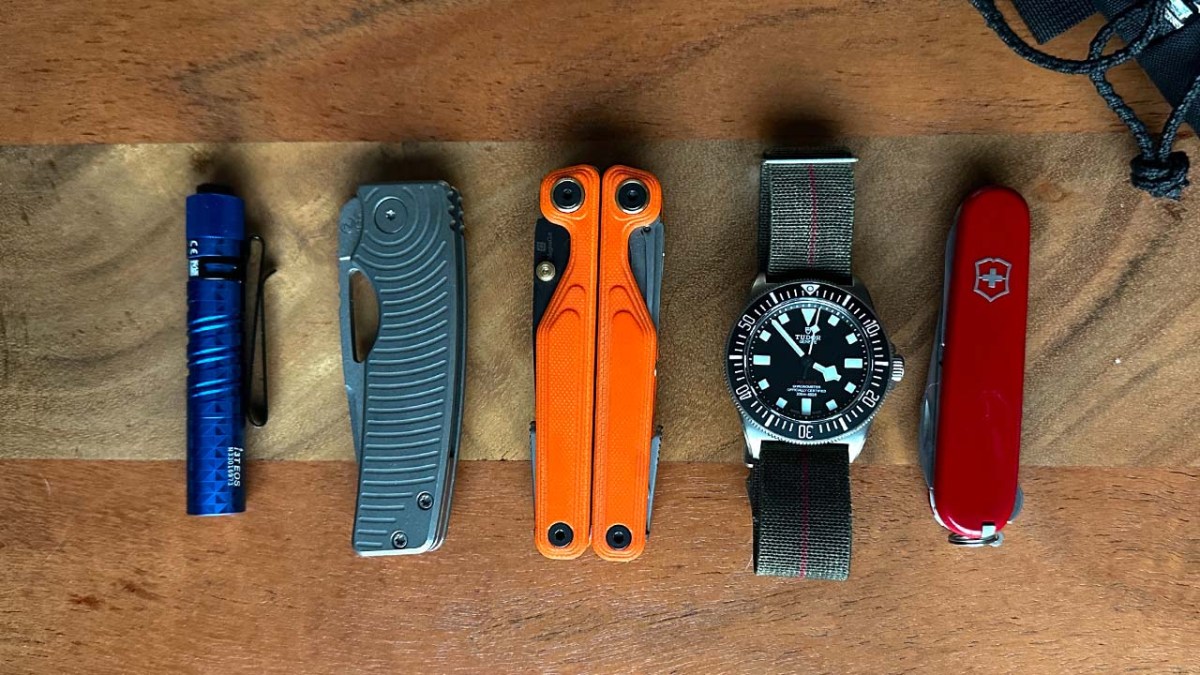After 20 Years of Applying, 28 Days of Hunting, and 150 Miles of Hiking, I Arrowed My Bull at 8 Yards

Eastern Oregon’s Blue Mountains have a legendary peak. At barely a hoof higher than 6,000 feet, Mount Emily is a landmark in the Grande Ronde Valley. Mount Emily is also known as one of the state’s best areas for producing trophy Rocky Mountain bull elk in a nearly-impossible-to-draw unit. Local hunter LeAnna Robins put in for 20 years hoping to hunt Emily once in her lifetime. She drew this year.
“As soon as I found out I drew the tag, we went out every single weekend scouting,” Robins says. “We put in tons of miles and then we took the entire month off to hunt and camp up there.”
The “we” was her brother Josh Robins, her dad Kevin Robins, and her boyfriend Kyle Bowen, and his dad, Rick Bowen, who started putting her in the points pool when she was 12. She’s 33 now. She started hunting with a bow in 2016. She’s harvested a buck, a bear, and two bulls smaller than the seven by eight bull she arrowed this year.
Robins, a dental hygienist, got a friend to cover her shifts for a month, and began hunting Aug. 30. All her pre-season prep had backfired, and her premier spot had a herd of domestic sheep grazing across it on opening day.
“They were there for two weeks,” Robins says. “They demolished that spot. Nothing else was coming in there.”
Other hunters were in her backup spot. It was hot. The elk were quiet. While on a four-wheeler, she unintentionally jumped a herd in the dark. Then another hunter pushed a herd into the herd she was on and moved them along. It was windy. The meadow grass was crunchy.
“It didn’t really feel like what you expect in a trophy hunting unit,” she says. “We had a streak of bad luck for the first three weeks.”
She hunted public land at first, saving permission she had secured on a private lot for the last week of her season. While standing on that property at season’s end, her hunting party spotted elk on public land. It had an impressive herd bull.
“All of a sudden that bull lets off this big, burly, mad bugle and then we hear horns coming together,” Robins says. “They’re fighting. We run while they’re fighting. We get down the hill and can see them fighting. Their horns are locked, and I can’t get a shot.”
When the two fighters separated, her boyfriend used a combination of cow calls and bugles to keep the herd bull interested. It worked so well, the elk didn’t notice Robins scrambling for an opening between dense deadfall, or steadying herself for a shot 8 yards away.
“Where he stopped, there was one tiny little perfect window between the branches,” she says. “He was broadside. I put my 10-yard pin on him and shot. I could tell instantly it was a good shot, but no one could believe I sent an arrow through the little opening I had.”
It was Sept. 26 — day 28 of 30 of their hunt. Robins had covered more than 130 miles on foot. She’d lost 10 pounds. (Her dad had lost 20.) They found the bull 230 yards away from where Robins hid with her quiver. It was downhill, only 15 yards from a dirt road. And it had an extra inch to its own heavy rack.
“There is a little broken antler tip in his head between his eyes,” she says. “It had to have happened during that fight we saw because there was fresh blood around it.”
Like Robins, the bull had a hard season, too. It had a swollen hoof, a crack in the skull from the embedded antler tip, and a hole in its skull just below that where another antler had pierced bone. The hide was missing patches of hair and the flesh bruised.
“I call him a warrior bull,” Robins says. “He had gone through some stuff.”
Robin and her crew have since butchered the bull for fajitas, chunks for stew, flank for carne asada, neck and rib for burger. Every ounce of good fortune replaces the rough streak that dominated a hunt that most likely only comes around every few decades.
“It’s a once in a lifetime hunt, maybe twice if you’re real lucky,” Robins says. “I feel like I could maybe draw again, but at that point you just hope you’re still in good enough shape to go out and do it.”
Robins and her dad rough-scored the bull at 340 inches, but that isn’t what she’s been focusing on. The hunt itself has left her on “cloud nine.”
“It’s a lot of pressure holding that big tag and then having everybody there [on the hunt],” Robins says. “I felt relief, and gosh, just — all your hard work and everything finally paying off and your prayers answered — I can’t even describe the feeling.”
Read the full article here









